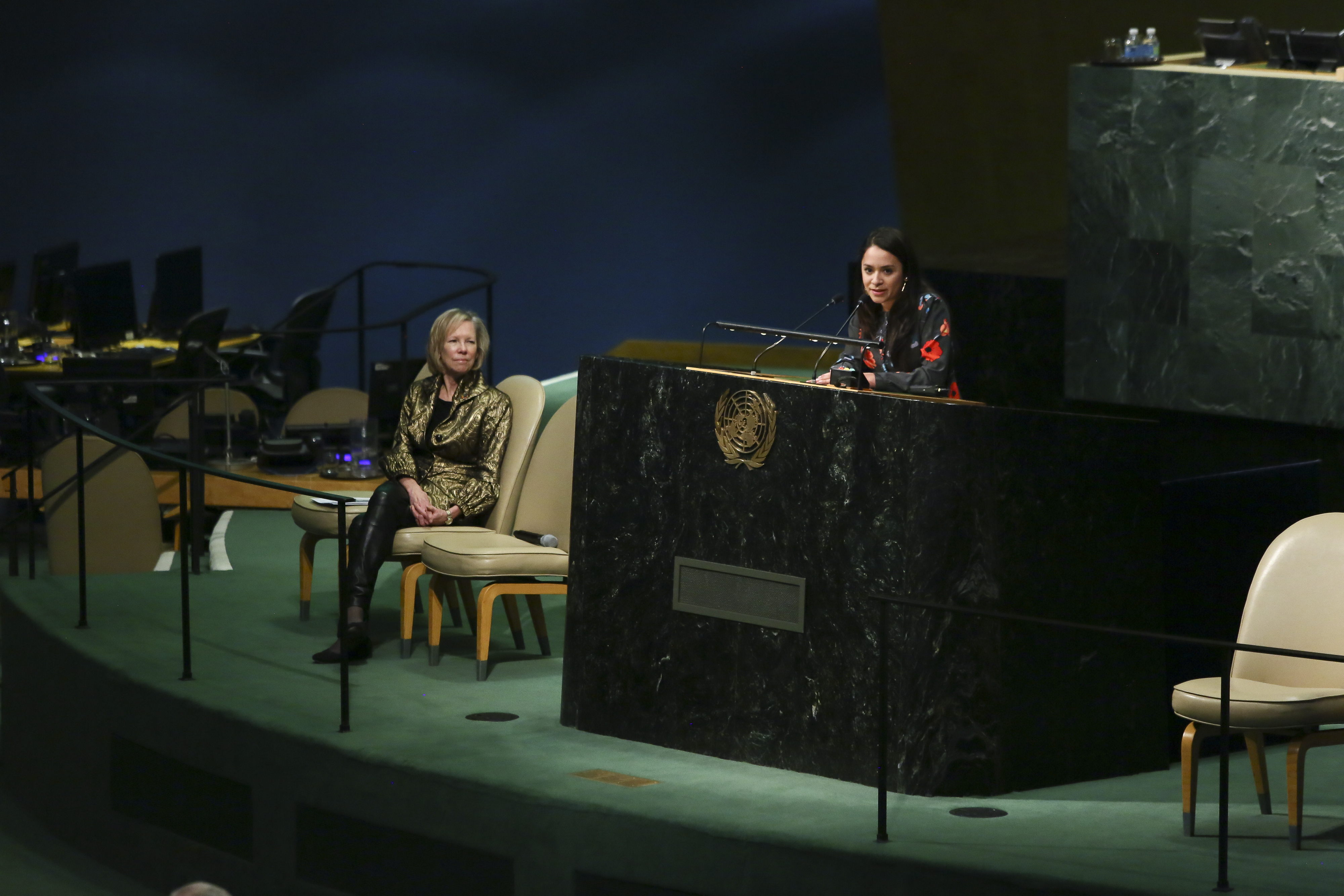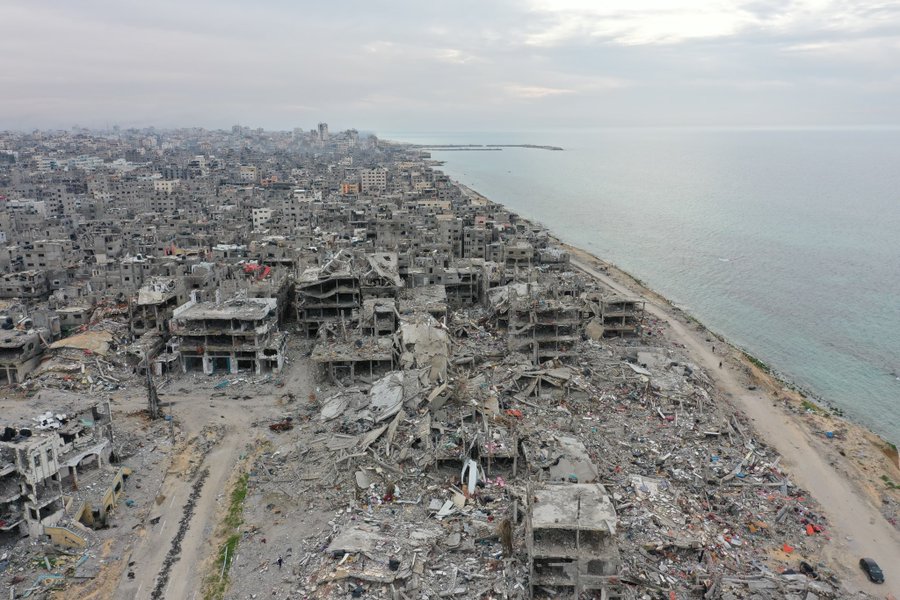The Super Bowl of Diplomacy: Stepping OFF the Sidelines and ON to the Field
Many of you know that the super bowl of diplomacy took place last week. The United Nations General Assembly Week (UNGA) was a hectic week full of conferences, high-level side events, breakfast/lunch/dinner/coffee meetings, happy hours, and any other type of meeting/event you can think of! Heads of States, Foreign Ministers, CEOs, celebrities, community leaders, youth leaders, and business leaders in almost every industry could be seen roaming the halls of the United Nations ready to speak up on behalf of their constituents. Streets were closed off, traffic was insane, and security lines were immense, which means you had to arrive at the UN at least an hour before your event began.
The minute you walk into the UN you see the SDG Media Zone where reporters, bloggers, and digital influencers are glued to their computers/ phones/ microphones ready to share the latest updates on UN discussions. Everything was reported in real time via all social media platforms. Every event seemed to have a hashtag, so if you missed something, you could just search for it on twitter to get quick snapshots of important one-liners that were said during the event. Outside the UN, there were side-events that are meant to build upon conversations happening at the UN.
Social Good Summit Master Class
On my first day, I was up at 6AM ready to be part of a panel at the Social Good Masterclass alongside: Dr. Alaa Murabit: High-Level Commissioner at the UN and SDG Global advocate; Edda Hamar, one of the 17 UN Youth leaders; and Giorgio Jackson, one of the youngest congressmen in Chile.
The masterclass was a highly curated room of 75+ global bloggers, digital and traditional journalists, social media influencers, social entrepreneurs, and youth leaders. The panel in which I participated pertained to why we must listen to youth leaders. The goal was to provide an understanding of the power that youth voices have in affecting change and driving the Sustainable Development Goals (aka. Global Goals). I spoke specifically about the issues that young people most value based on both the survey responses I received from the Youth Voices Survey and my conversations with young people. I discussed youth unemployment and the importance of providing young people with the resources (financial and legal support, as well as mentors) to help them make their passions their jobs.
After the masterclass, I ran straight to the Digital Media Lounge at the Social Good Summit . The Social Good Summit is a 2-day event that explores the role technology plays in improving the world. It is one of my favorite events of the year because it’s at the intersection of tech, media, and social good. Speakers ranged from Chelsea Handler, to Joe Biden, to Filippo Grandi (Head of the UN Refugee Agency), and many other leaders using technology in innovative ways to achieve the global goals. You can find the livestream of the 2-day event here and reflections of the event from UNA Bloggers here.
I was blown away by the complexity of the projects young people were undertaking, and the commitment they demonstrated to making this world a better place. Throughout my term as Youth Observer, I will be highlighting these incredible young people via my social media channels.
Young Leaders x World Leaders
One of my favorite events of the week was the High-Level breakfast meeting titled: Young Leaders x World Leaders, hosted by Ahmad Alhendawi, the UN Youth Envoy. I sat at a table with global youth leaders (Youth Delegates, SDG Leaders, and Innovators) making huge impacts in their communities (one of them had opened a Hospital, and all of them had started an organization of some sort!). The Crown Princess Mary of Denmark and Maher Nasser, Head of UN DPI Outreach Division were also at my table. It took me a few minutes to get over the fact that I was sitting next to some of the world’s most inspiring people. As table facilitator, I helped guide conversations about the progress we’ve seen since the SDGs were launched last year. In particular, we discussed countries like Botswana, Vietnam, and Tajikistan in relation to women’s sexual and reproductive health. I learned that, in many developing countries, just bringing the issue of women’s health to the table was significant progress! It’s interesting to see the parallels to the US, as we still struggle with women’s sexual and reproductive health, even as a developed country. We talked about the importance of ensuring that young people are at the table when policies are being created. We are the largest youth generation EVER. It simply doesn’t make sense to exclude the very people that will be affected by the policies being created for the majority of their lifetimes.
The biggest piece of advice I got out of this meeting was:
Don’t wait for someone to invite you to the table. Opportunities will not be handed to young people. We need to seek them or DEMAND them. We must pull up our own chair and find our own ways to be in the decision-making table.
UNGA Key Issues: Taking a Deeper Dive
One of the biggest themes at UNGA revolved around the refugee crisis and young people’s role in countering violent extremism. On September 20, President Obama hosted the Leaders’ Summit on Refugees to galvanize significant new global commitments to:
For more information on what came out of the summit, check out the Fact Sheet.
I attended an event hosted by Facebook, the US State Department, and Edventure Partners. The event showcased youth-led campaigns from around the world that were focused on countering violent extremism. Research and experience have demonstrated that extremist groups heavily target young people. Therefore. the campaigns young people launched are targeted to individuals most susceptible to extremist messaging and who have the ability to make a difference. Five winning teams from around the world presented their campaigns. Facebook donated ad credits to help these teams scale their campaigns, and Edventure Partners and the State Department gave the teams a platform to raise awareness of their campaigns globally. The campaigns had various components – digital and in-person- and helped increase awareness of other people’s realities. They used creative storytelling to bring the experiences of refugees and migrants living in their own communities to life. It was the perfect example of how you can think globally, and act locally. Following this principle, young people built empathy in their own communities. It’s hard to hate someone once you understand their story.
To find out more about this competition visit: http://edventurepartners.com/peer2peer/
I also learned a lot about what it’s like to be Muslim in America. I realized that countering violent extremism isn’t only an issue of the Middle East/ North Africa. Here in the US, Islamophobia is very real and can manifest violently. I sat down with several Muslim American youth to learn more about their experiences, an area I want to understand better. Before UNGA, I wasn’t fully aware of the issues the young American Muslims face, and I am so grateful to the friends I made that have shared their stories. Listening to others and sharing our own stories is an excellent way to cultivate the understanding and empathy that best counters extremism.
The US State Department also co-hosted, alongside an organization called Search for Common Ground, an event that focused on uniting youth and governments against violent extremism. Over the past year, the international community has increasingly recognized the importance of engaging youth as partners in peace and security and, specifically, in countering and preventing violent extremism. I learned more about the passage of Resolution 2250 on Youth, Peace, and Security, a culmination of efforts driven by young people around the world. During the event, we broke out into groups to outline key ways young people can partner with governments to counter violent extremism. In my group we took it a step further and broadened the list of key stakeholders in this discussion. For instance, we discussed the importance of bringing religious leaders to the table in CVE conversations, as their influence and credibility are crucial in stopping violence born out of extreme beliefs.
Global Citizen Festival
My week ended at the Global Citizen Concert, where over 70,000 activists came together to hear world leaders commit to advancing the global goals. We also got a chance to see incredible artists such as Rihanna, Kendrick Lamar, Major Lazer, Demi Lovato, Metallica, Yandell, and many more!
Youth and the Global Agenda
I can easily say that UN General Assembly week 2016 was one of the craziest weeks of my life! I was majorly sleep deprived and constantly in a rush, but I’ve also never been more inspired. After it was all over, I had to chance to interact with past Youth Observers and young people in Mexico City, Guatemala, Honduras, and other locations through a State Department live webchat, where we discussed UNGA outcomes and advice on how we can all be more engaged. You can view the discussion from the webchat here.
After speaking with so many incredible young leaders from around the world, I left with a renewed sense of hope. I am certain that we can be the generation that ends poverty.
I know we’re often bombarded with tragic news whenever we turn on our TVs, or open up Social Media. Still, we cannot lose hope. After being at UNGA, I have no doubt in my mind that we have the intelligence, the technology, the resources, and the will to make our world a better place.




